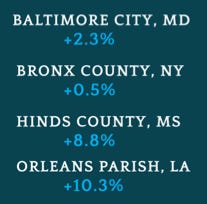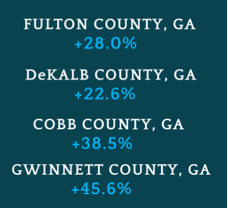On Monday, I ripped through the Halderman report, and what its unsealing means for the future of elections in Georgia and beyond. The report itself, and Halderman’s commentary on it, is a two-edged sword; it cuts the concept of electronic voting, and Georgia’s specific systems, to the core, criticizes Secretary of State Brad Raffensperger’s inattention in fixing these glaring deficiencies, then shows serious mercy, by saying there is still “no credible evidence” supporting Georgia’s 16 electoral votes were misallocated to Joe Biden.
Is Halderman trying to remain credible as a scientist, or perhaps seeking to maintain “welcome” status at local social gatherings, by not going there and getting political? Without further digging, one may consider that a wise strategy for having the report taken more seriously. When I was drafting my analysis of the unsealing of Halderman’s report, I noticed a real gem from 2016 and composed it like this:
In the aftermath of Hillary Clinton’s 2016 loss, a group of scientists led by Halderman admonished the Clinton camp to challenge election results over something the media would slam me as a conspiracy theorist for saying. From CNN:
“Halderman…told the Clinton campaign they believe there is a questionable trend of Clinton performing worse in counties that relied on electronic voting machines compared to paper ballots and optical scanners…”
The Midwest had been on a Republican trend for six years when Trump flipped Pennsylvania, Michigan, and Wisconsin. Georgia, on the other hand, had been won by Trump in 2016 with little effort and money, and then experienced one of the largest Republican vote gains in one election cycle in history in 2020, only to be lapped by a Democrat performance exceeding Barack Obama’s vote gain in 2008. Halderman appears to be quite selective when it comes to his suspicions if he thinks there’s nothing to see here regarding Georgia’s curious 2020 result, especially after The New York Times needle had Georgia going to Trump on election night with 98% certainty.
A true political guru from Michigan, where Halderman works as a professor, would understand that his state had been trending heavily in favor of not only Trump, but the GOP in general, under Obama’s presidency. Trump turbocharged that trend and managed to flip the state just eight years after it went “blue” by more than 16 points. I have explained these coalition shifts in great detail, and they bear out the likelihood that Trump would have carried Michigan by 8.5% in a fair election, at minimum. Furthermore, believable Trump margins in Wisconsin (7.8%) and Pennsylvania (6.4%) represent a substantial continuation of these Midwestern white working class trends that began in the 2010 midterms.
Thanks to the stagnation or decline of population in a huge chunk of counties in those states, the pronounced movement of voters from one side to the other (coalition shift) resulted in a loss of votes for the Democrat Party in 2012, and even more severely in 2016, as the white working class began to disassociate from the “party of the people.” Trump’s gains in 2020 were even steeper than his gains in 2016, yet they were cancelled out by counterfeit Biden votes in every single county in that critical trio of states.
Still, Halderman saw no issue with analyzing basic statistical data in 2016, when Barack Obama’s absence atop the ticket, and the presence of a diabolical scold, blew the floodgates open in favor of Trump’s flanking maneuver. Perhaps Mr. Halderman would like to have a look at some of Georgia’s abnormalities andirregularities, as our tone-conscious country club GOP friends might call them.
Biden Popularity in Comparable Metros
Joe Biden exceeded Hillary Clinton’s 2016 vote total by 2.3% in Baltimore City, a Democrat stronghold with a heavily black voting base that goes almost 90% for whoever the Democrats field. Is there cheating in Baltimore City? Certainly. Is there an indication that any special spin was put on the 2020 election? None at all. In addition, Biden, with his 81 million vote stunner of a performance, failed to grow by even 1% over Clinton’s vote total in heavily blue Bronx County, New York, and lost a lot of margin to President Trump there.
Well, Captain, those are northern areas, nowhere near Georgia. Why should we care?
Painting the picture in greater detail and moving to comparable southern metros, we also find that Hinds County, the home of metro Jackson, Mississippi, saw a Biden gain of just 8.8% over Clinton, and Orleans Parish, Louisiana, home to the Big Easy, grew by a modest 10.3% in support of Biden over Clinton. Those numbers give us baselines.
Given that Biden hardly campaigned in Georgia or spent money in a state Trump was expected to win comfortably, one might think we could expect gains in metro Atlanta of 10%, or maybe even 15% factoring in population growth. Four big counties give the Democrats lots of votes. They are Fulton and DeKalb, home to urban Atlanta, and Cobb and Gwinnett, the two oldest suburban counties that have only flipped “blue” since the 2016 election. What kind of growth did Biden have in those counties?
Ah, yes. The safest and most secure election ever strikes again, and would you look at that? Just enough to get a win of 11,779 votes in the state, with Trump having one of the steepest GOP vote gains in the history of Georgia, and the highest since 2004.
For what it’s worth, I have crunched the numbers in these four counties and believe there are approximately 130,215 fictitious votes for Biden between them, even as I afford generous Biden gains in all four that are likely not reflective of reality, in which Trump had the strongest Republican black vote performance since 1960 and gained over 11 million votes nationally.
Eastern Alabama-Western Georgia Comparison
Keep reading with a 7-day free trial
Subscribe to Captain K's Corner to keep reading this post and get 7 days of free access to the full post archives.





